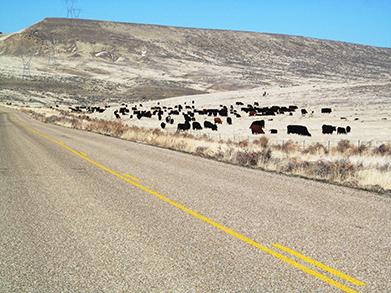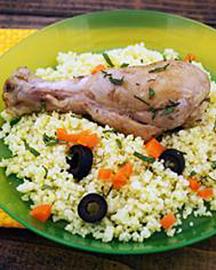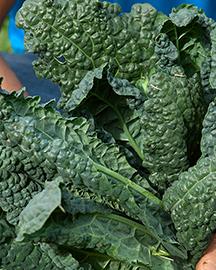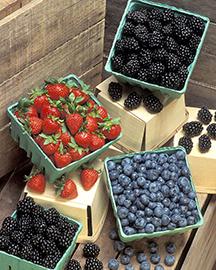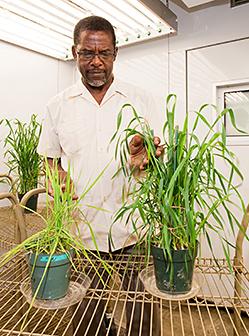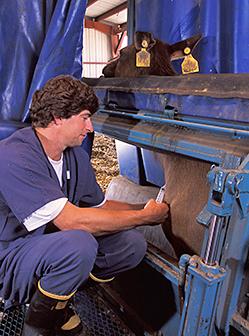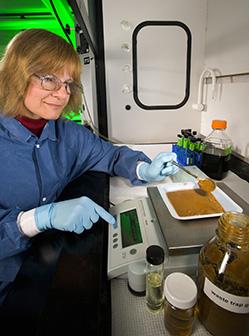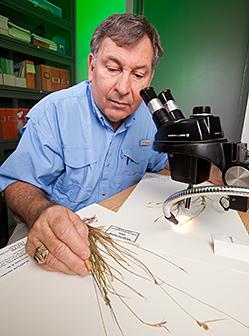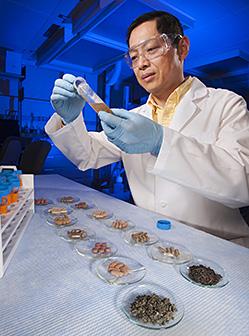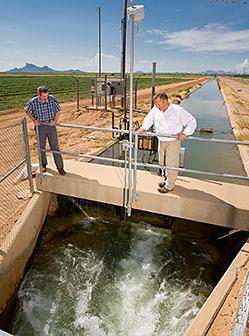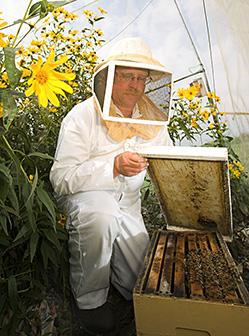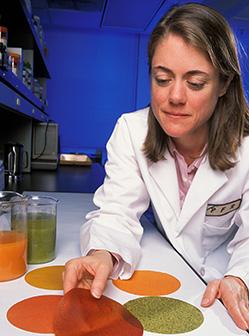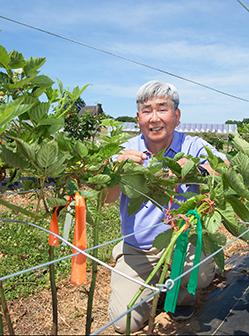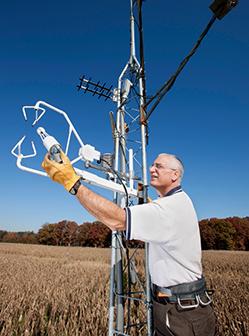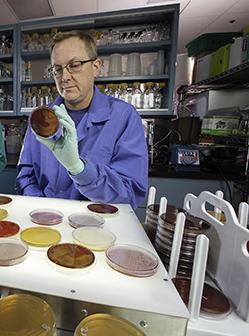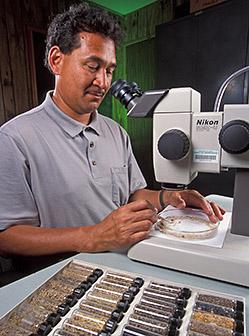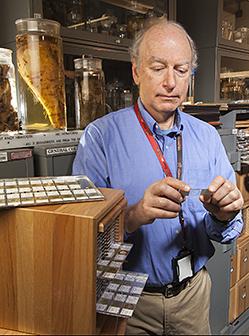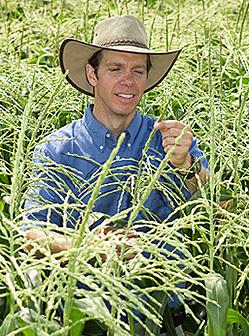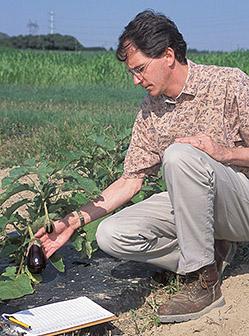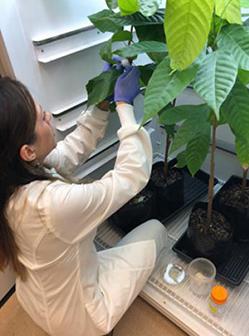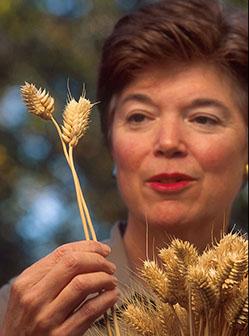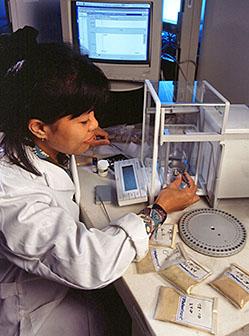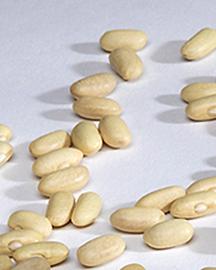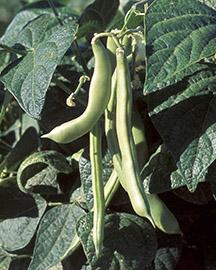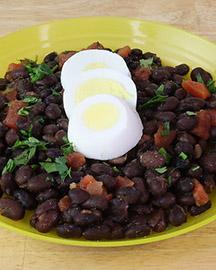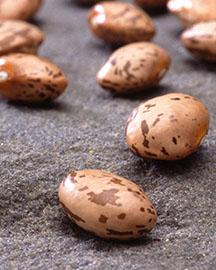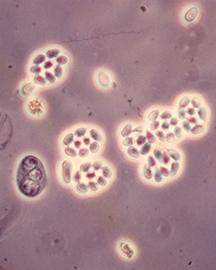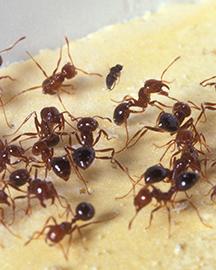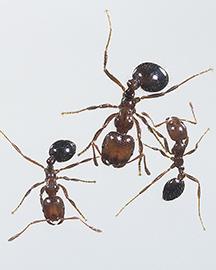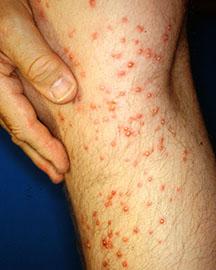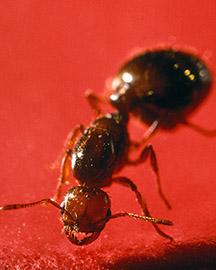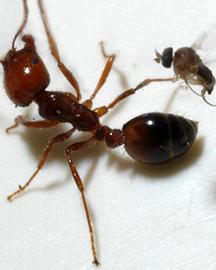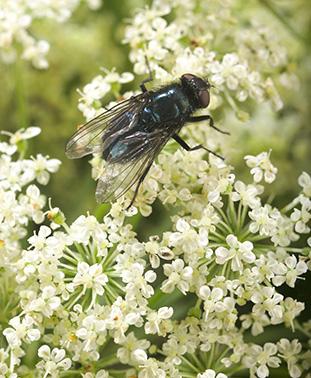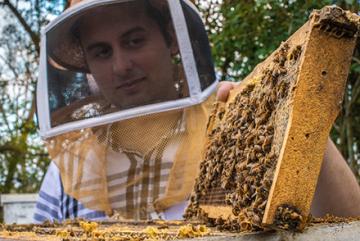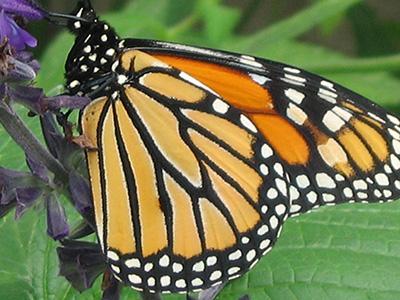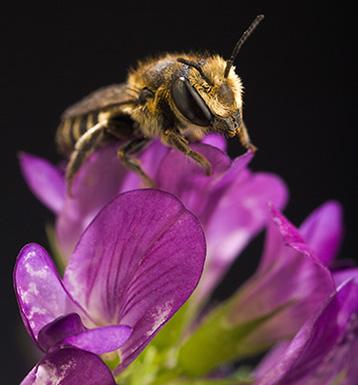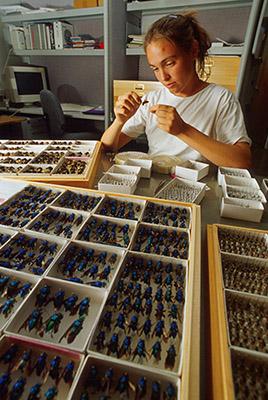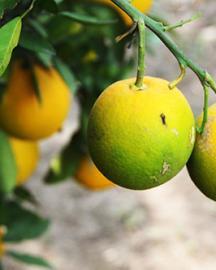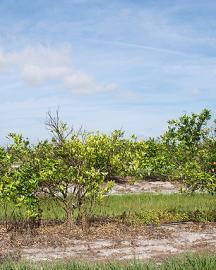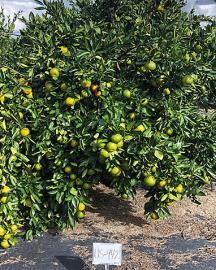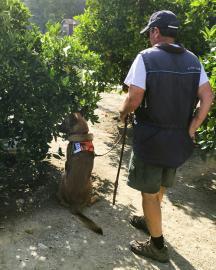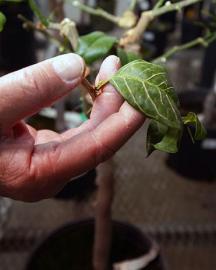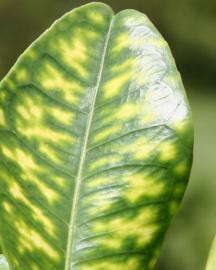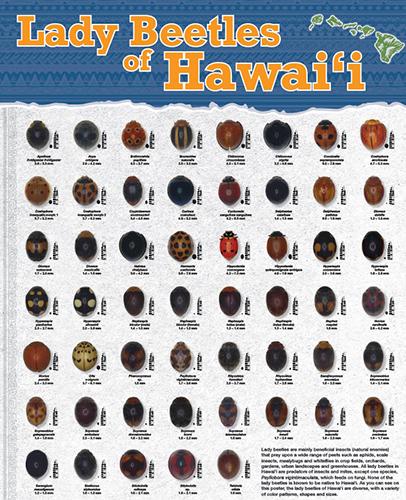Want To Be A Scientist?
Careers for new scientists span a variety of disciplines in agriculture. Becoming a scientist requires dedication, creativity, and a strong desire to learn new things! Scientists provide new approaches and new technologies needed by consumers, producers, and industry. Want to know more? Check out the categories below; then, if you want, take a quiz!
An agronomist studies crops and soils and how they interact—and how farmers can get them to interact differently to grow better crops and keep the soil healthy. The crops may be field crops like corn, horticultural crops such as lilies and azaleas, aquatic (water) crops like cranberries, or conservation and pasture crops such as grass and clover.
Read about this kind of research:
ARS Research Prepares Farm Soil During Farming's 'Off-Season'
An animal scientist studies animal husbandry—the breeding and raising of livestock, such as cattle for milk and meat production. Animal scientists are always looking for better answers to many questions: What's the most nutritious and economical diet to feed a cow or a steer or a lamb or a chicken? What's the best way to try to make sure an animal mother has the most or the healthiest babies? Some animal scientists, such as veterinarians, also study livestock diseases and how to identify, cure or prevent them.
Read about this kind of research:
Animal Ethics, Agriculture, and Food Production.
A biologist studies living things, like plants and animals and microorganisms. Biologists examine the what's, where's, when's, why's and how's of these creatures. Ditto, for their requirements to stay alive and kicking and make seeds or eggs or whatever else it takes to produce a new generation. The many kinds of biologists include botanists, who specialize in plants, and zoologists, who specialize in animals. Some biologists specialize in the places where things live, such as the soil or the water—or even the insides of some other creature—like you!
Read about this kind of research:
Building a Better Bean
A botanist is a scientist who works with plants. He or she might specialize in one particular plant, like potatoes, or do research in how some plants are related to one another—like wild and modern strains of plants like tomatoes or wheat. A botanist can identify and describe different plants and seeds so others can tell exactly how they differ from and resemble each other. Another specialty might be plant habitats (where plants grow) and habits—not habits like drinking too many sodas, but how the plant grows, such as a vine that creeps along the ground rather than sending up a thick, strong stem.
Read about this kind of research:
The Duke of Herbs (and Medicinal Plants)
A chemist studies matter—any physical substance, such as a solid, gas or liquid. Chemists study the chemicals that make up matter, its properties or basic characteristics, its various parts, and changes in its makeup in response to conditions like light and heat.
Read about this kind of research:
Scientist of Many Talents Champions Planet-Friendly Products
Witch Hazel Spells Trouble for Harmful Microbes
An engineer examines and tests the properties of matter and the sources of power in nature, with the goal of making new, better and more useful structures, machines and other products. There are many different types of engineers. Those in agriculture include civil, industrial, genetic, electrical, mechanical, chemical, hydraulic, electronic and agricultural engineers. An agricultural engineer, for instance, creates and improves ways—often related to farm machinery—to produce more and better food and fiber for us.
Read about this kind of research:
Watch What You Eat… From Space
ARS Scientists Are Employing Manure to Help Dairy Farmers Tackle Climate Change
An entomologist digs up—sometimes literally—all kinds of information on insects, because these six-legged critters affect just about every aspect of agriculture—as well as daily life. So, it's important that entomologists know all they can about insects: the good, the bad and the ugly bugs. Where do certain insects live, what do they eat, and how do they survive the winter? How do they defend themselves from their enemies? In agriculture, some insects are bad guys—like boll weevils or corn earworms. Others, like bees, are critical to making honey and moving pollen—the powdery stuff that one flower gets from another so a fruit will form.
Read about this kind of research:
Biological "Green" Alternatives to Chemical Pesticides
Do Bugs Bug You?
ARS Works to Establish Lady Beetles in Hawaii
A food scientist, or food technologist, looks for better ways to select, preserve, process, package and distribute food products, including the ingredients that go into them. A food scientist also must have extensive knowledge on the nature, composition and behavior of food, such as what happens to its flavor, color or nutritional properties when cooked or placed in storage. Biology, microbiology, chemistry and engineering are just some of the diverse fields of study that food science draws on to ensure safe, high-quality consumer products.
Read about this kind of research:
The Nuts and Bolts of Peanut Breeding
Egg-splaining Egg Safety
Turning Food Waste into Healthful Delights
You might think of a horticulturist as part scientist and part artist. This scientist specializes in growing fruits, vegetables, flowers and ornamental plants, such as the kind in your yard or park. Part of this job includes coming up with new or different kinds of plants.
Read about this kind of research:
Researchers Harness the Sun’s Rays to Fight Strawberry Disease
A New Way To Train Blackberry Canes
A hydrologist studies water and its properties, particularly as it behaves as rainfall or in lakes, streams and even in soil. A hydrologist's top interests include where water can be found and the cycle of its movement: from the time it lands on the Earth as rain or other precipitation, to its travels on, through and under the land and its eventual return to the ocean.
Read about this kind of research:
Water Vision 2050
ARS, NASA Join Forces To Monitor Earth's Water Supply
A microbiologist is someone who studies living things—and parts of living things—that are so small that you usually need a microscope to look at them. Sometimes a microbiologist studies these very small life forms by looking at how big groups of them change and grow.
Read about this kind of research:
Advancements Against African Swine Fever Virus
Healthier Waterways, Healthier You
Secret Ingredient Improves Backyard Dining
A microscopist is a unique investigator who specializes in seeing things super—"up close and personal." He or she uses a microscope to explore things invisible to the naked eye, like plant and animal cells, bacteria and viruses.
Read about this kind of research:
Electron & Confocal Microscopy Unit
A nematologist is a scientist who studies worms—but not earthworms. Instead, this scientist studies worms called nematodes or roundworms. These worms don't have segments like the earthworm does. Many of them are parasites that live on or inside animals or plants and cause trouble for them. So, you can see why agriculture would need this type of scientist.
Read about this kind of research:
A Suit of Armor for Biopesticides
A nutritionist is a scientist who deals with nourishment—what you and I and other living things need to eat and drink in order to live and grow and stay healthy.
Read about this kind of research:
Stress and Diet Interact to Influence Health
Scientists Build a Healthy Dietary Pattern Using Ultra-Processed Foods
Eating Late? Watch Out For Excess Calories
A plant ecologist works with the big picture: the combination of many factors that affect how plants grow, such as climate, soil and other living things. Each influences whether or not a plant grows to be healthy and productive.
Read about this kind of research:
The Sweet Discoveries of the Sweet Corn Hybrid
Plant geneticists work with a plant's genes to search for and strengthen—or weaken—certain traits, like its tolerance to cold or the size or sweetness of its fruit. They also work to improve breeding methods and ways to make sure that future generations of a particular plant will have the traits farmers want it to have.
Read about this kind of research:
Pleasing Peppers for Garden and Plate
Getting to the Root of the Matter
New Cultivars Sweeten Sugar Industry
A plant pathologist studies diseases of plants and looks for ways to prevent them or wipe them out when they show up. Plant pathologists also see how diseases mess up a plant's growth and development or cause damage to crops after they're harvested, or when they're transported to market or stored.
Read about this kind of research:
For The Sake Of Chocolate: ARS Continues Its Labor Of Love In Cacao Plant Research
Researchers Harness the Sun’s Rays to Fight Strawberry Disease
A plant physiologist studies the life processes in plants. Plants look like they basically just sit there in the soil. But they can be very busy with photosynthesis, taking in carbon dioxide and giving off oxygen, and responding to light, temperature, moisture, insect pests and chemicals—to name only a very few. A plant physiologist might specialize in one particular process or become an expert in one particular plant.
Read about this kind of research:
Using Ancient Apples to Improve the Future of Apple Breeding
A soil scientist studies ... uh, take a wild guess. He or she seeks to understand how soils form and their basic qualities or properties. For example, soils differ from place to place in part because they contain different ratios of clay, silt and sand. This can affect which plants can grow, how well they can grow, and what farmers may need to do differently to get the best results.
Read about this kind of research:
Want To Know What’s In Your Soil? There’s An App For That!
The Significant Impacts of Carbon Sequestration on Soil Health
For more information about the many career paths in agriculture, check out the Faces of Agriculture: A USDA Speakers Series. Faces of Agriculture is an innovative video speaker series that aims to show students that agriculture is about more than just farming and expose students to the vast array of career paths related to agriculture.
